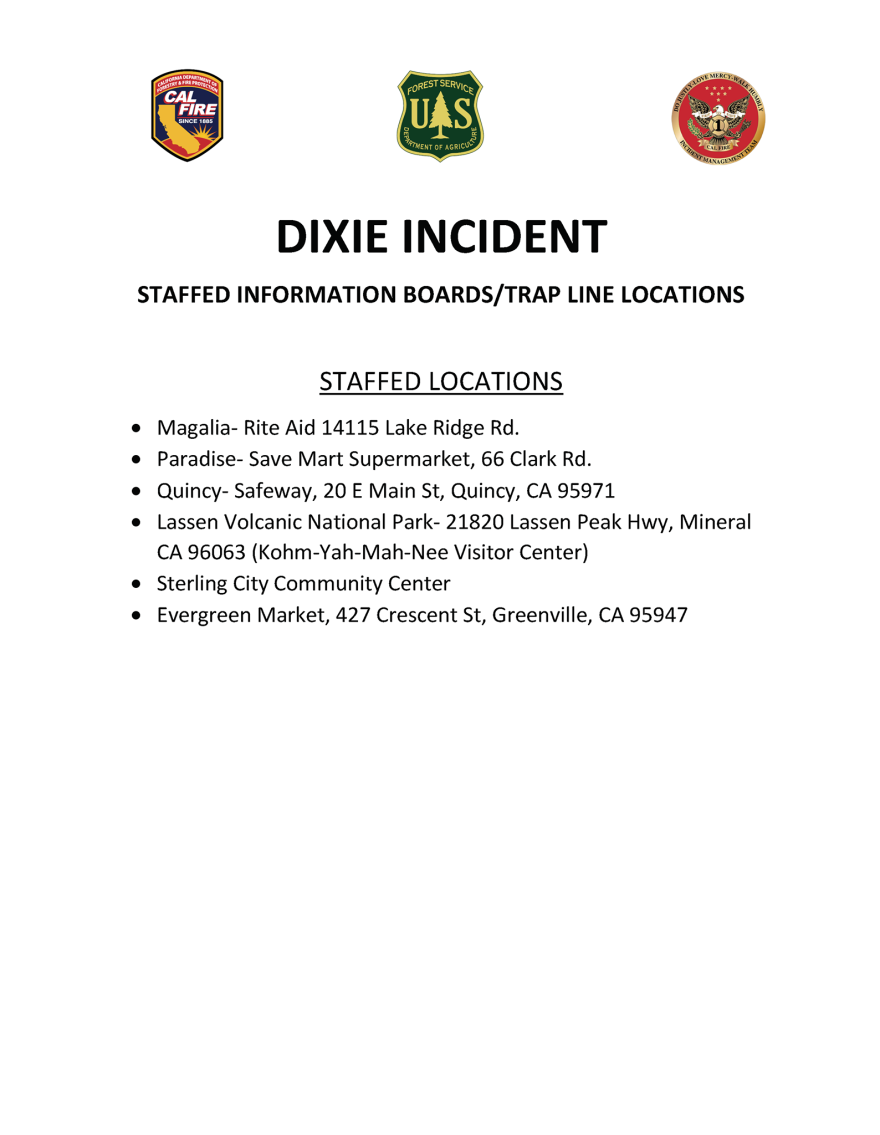As of Thursday morning, the Dixie Fire expanded to more than 100,000 acres. According to Cal Fire’s Butte Unit, the containment stands at 17%, a slight increase from Wednesday’s 15%.
The Dixie Fire is on the verge of surpassing the Beckwourth Complex to become California’s largest wildfire this year. As of Thursday morning, The Beckwourth Complex was 105,670 acres.
NSPR’s Alec Stutson spoke with Cal Fire Public Information Officer Rick Carhart on Thursday about updates on the fire’s conditions and the possibility of new communities being threatened.
Here are the highlights from their conversation.
This interview has been edited for brevity and clarity.
On the development of the Dixie Fire in the last 12 hours.
The fire is continuing to advance to the north, and a little bit northeast, in the direction of Lake Almanor. Overnight, it reached the shores of the Butt Valley reservoir. There have been a couple of spot fires across Butt Valley reservoir, but we've been able to take care of those.
And that is directly in line with Lake Almanor, so the fire is still about five or six miles away from Lake Almanor. It's moving slowly in that direction. But we're able to get more resources on it now at this point.
On whether Butt Valley Reservoir will help slow the fire's progress.
One of the things also around the Butt Valley reservoir, is the Chip's fire burned (there) about nine years ago. And so, when you get into a burn scar like that, it reduces the amount of fuel available for the fire to burn and consume and spread. That's helping to slow down the spread of the fire, as well as some of the dozer lines that were cut for the Chips fire. And then the other thing too in that area is that at this point now, where the fire is moving to, the terrain is becoming a little bit less extreme.
So there have been a lot of places where it's been just about impossible to get boots on the ground, because the canyons have been so steep, and there are no roads anywhere near it. But now that it's getting closer to the lake, it's getting into areas that are not as steep, it's more rolling terrain. And then there are also more roads so we're able to get a lot more equipment and personnel to those places to fight the fire.
On whether Code Red emergency alerts will work if you lose your power
It should work if you don't have power because it's a phone call. So if you have a landline that doesn't require being plugged in, or if you have a cell phone with a charged battery, you should still be able to get those alerts.
Because of the fact that there potentially are people without power, we're writing that information out on paper. If you can get to somewhere where we have information boards set up, which exist all over the areas of the fire (in) a lot of different communities in Plumas County.
If you can get to one of the boards, you can get all the information that you need, and possibly even talk with one of our Public Information Officers in the area.

On how residents in at-risk areas can stay up to date, especially if they lose their power
We have an entire staff of Public Information Officers. It's our job every day to go and refresh the information on those boards. So they bring out a new map every morning, a new incident update, and any other pertinent documents to what's going on that day with the fire and they'll staple those to a big sandwich board.
And then, in a lot of instances, they'll stick around because some of those boards are (in) places where the community gathers. And so we've had in some places, like Chester and in the Quincy area, we've had people who've been stationed at one of those boards for two and three hours and just been nonstop with people coming up and asking questions. And that's exactly what we're there for. So they're not boots on the ground fighting the fire, but we're out there giving the information to the public, which is just as key as well.





